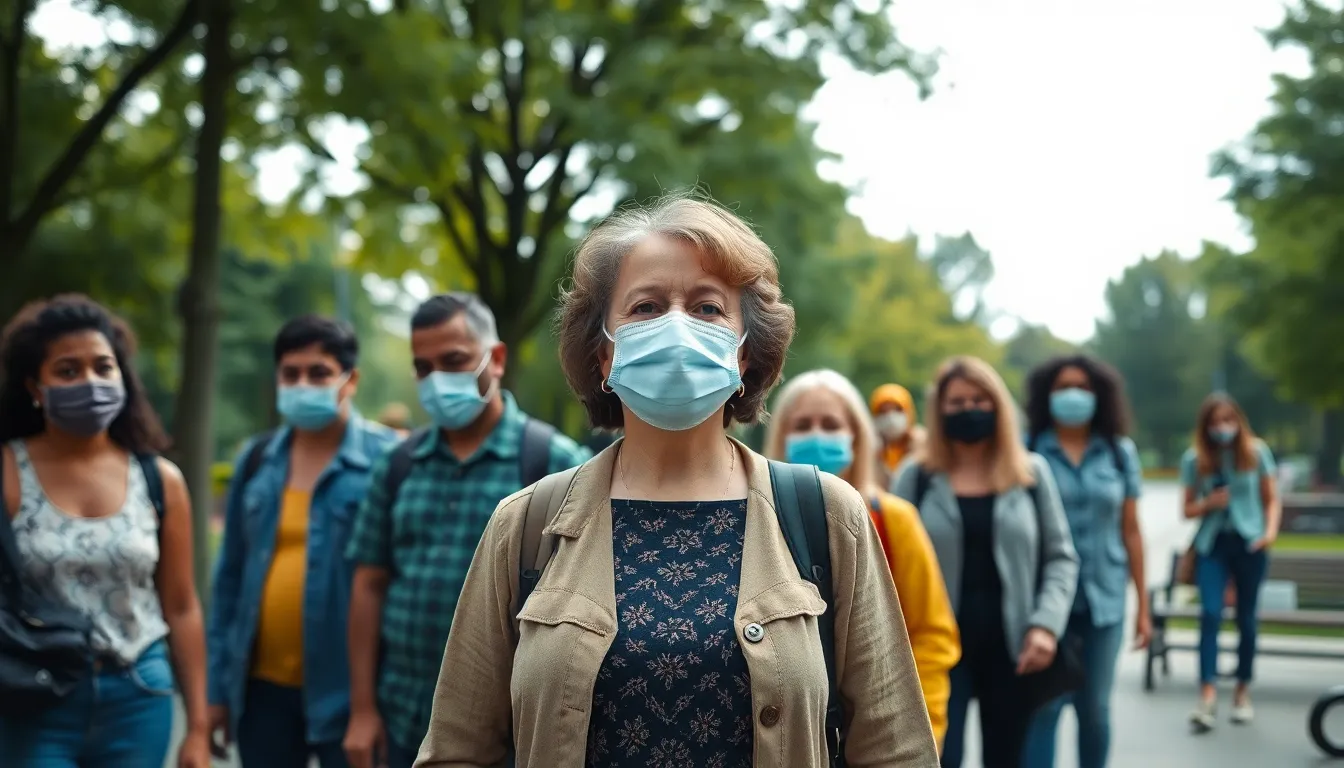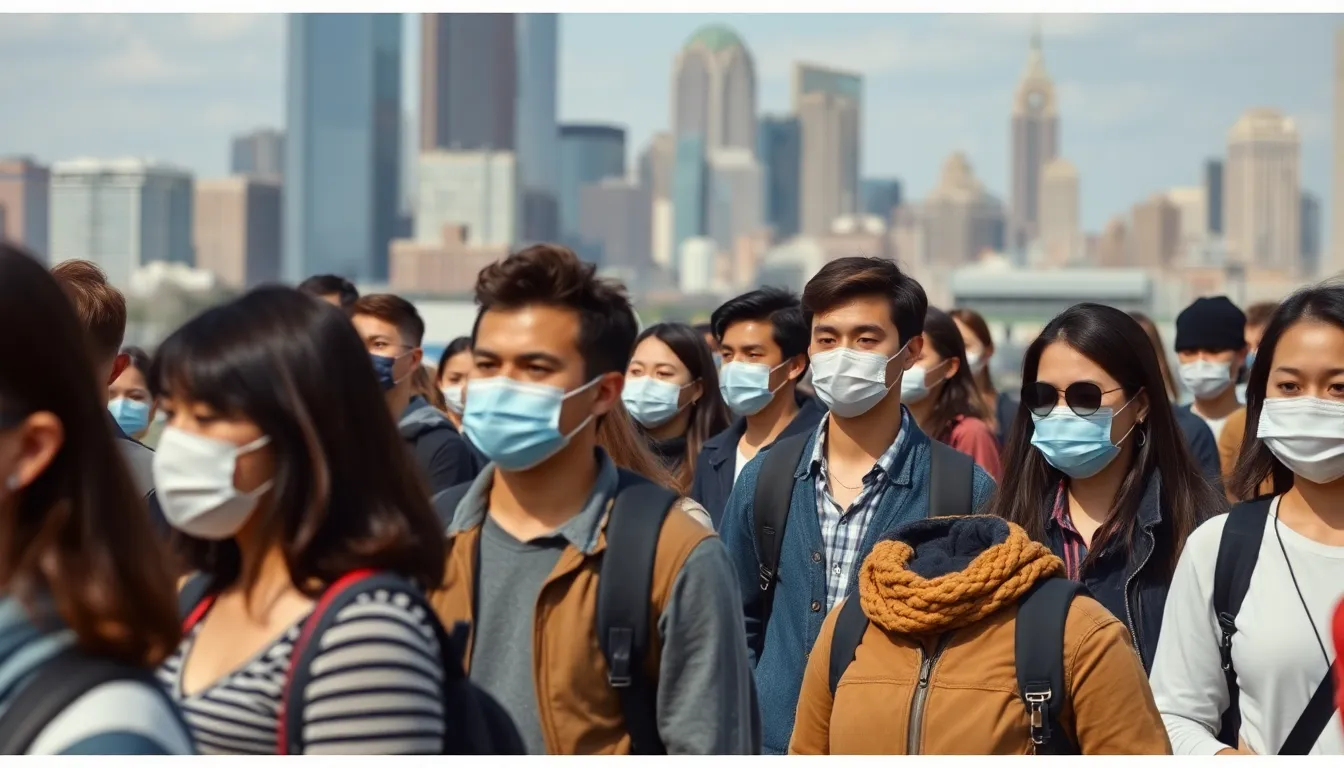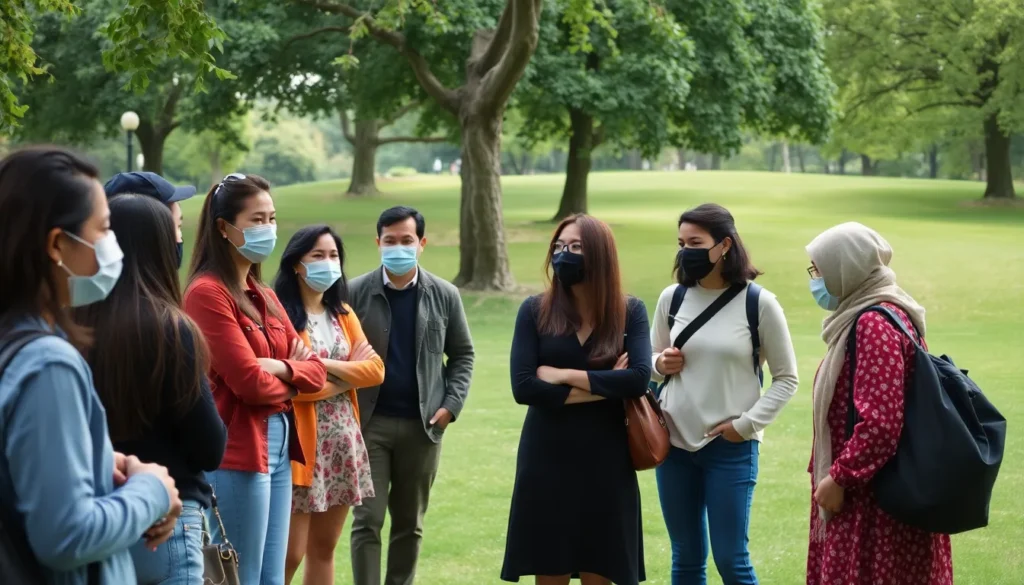Table of Contents
ToggleCOVID-19 has turned everyone into amateur epidemiologists, but one question keeps popping up: how long are you contagious? It’s like trying to figure out when that leftover pizza in the fridge is no longer safe to eat—nobody wants to take that risk! Understanding the contagious period is crucial for keeping friends, family, and even that neighbor you avoid at all costs safe.
While the science may sound complicated, it’s essential to grasp how long you can spread the virus. Spoiler alert: it’s not just a quick sneeze and done. Knowing the timeline can help you navigate your social life and avoid unintentional “surprise” parties where no one wants to be the guest of honor. So, let’s dive into the details and clear up the confusion about how long you might be spreading the love—or in this case, the virus.
Understanding COVID-19 Contagiousness
COVID-19 contagiousness refers to the period when an infected person can transmit the virus to others. Knowing this period is essential for minimizing exposure to friends, family, and the community.
What Does Contagious Mean?
Contagious describes the ability to transmit an infectious disease through direct or indirect contact. A person becomes contagious shortly after infection, often before showing any symptoms. This asymptomatic phase allows the virus to spread easily. Typically, individuals remain contagious for several days, meaning that even without visible signs, they can still pass COVID-19 to others.
Key Terms Related to COVID-19
Understanding specific terms associated with COVID-19 helps in grasping its contagious nature. Isolation refers to separating infected individuals from healthy ones to prevent virus spread. Quarantine involves separating individuals exposed to the virus but who are not yet symptomatic. The incubation period indicates the time from exposure to symptom onset. Knowing these terms aids in recognizing the urgency of taking protective measures during an outbreak.
Factors Influencing Contagious Period


Understanding the factors that influence the contagious period for COVID-19 helps assess exposure risks effectively. Several key elements contribute to an individual’s contagiousness.
Viral Load and Symptoms
Viral load plays a significant role in determining contagiousness. Higher viral loads increase the likelihood of transmitting the virus to others. Symptoms also affect the contagious period; individuals tend to be most contagious in the days leading up to symptom onset and during the first week of illness. On average, peak viral levels occur around two days before symptoms manifest. For asymptomatic individuals, the risk remains, which emphasizes the importance of precautions even in the absence of visible signs of illness.
Variants of COVID-19
Variants of COVID-19 influence contagiousness and transmission dynamics. Emerging strains, such as Delta and Omicron, exhibit variations in transmissibility. Studies indicate that some variants spread more easily than the original virus. This increased spreadability may result in those infected being contagious for longer periods. Understanding the characteristics of these variants helps inform protective measures and public health guidelines, ensuring communities remain vigilant against potential outbreaks.
General Timeline of Contagiousness
Understanding the timeline of contagiousness related to COVID-19 is essential for effective prevention efforts. This timeline can inform personal choices and public health measures.
Pre-Symptomatic Period
During the pre-symptomatic period, individuals can spread COVID-19 before showing any symptoms. This phase typically begins 2 to 3 days before symptom onset. Research indicates that people are most contagious during this time, as high viral loads often occur. Asymptomatic carriers pose a significant risk to others, highlighting the importance of masking and testing, even in the absence of symptoms. Precautionary measures during this period can greatly reduce transmission.
Symptomatic Period
Symptoms usually appear 4 to 5 days after exposure, although this can vary. During the symptomatic period, individuals remain contagious for about 7 to 10 days. Significant viral shedding occurs, especially during the first week of illness. The presence of symptoms, such as cough and fever, correlates with higher transmission rates. Close contact with others should be avoided during this time to minimize the risk of spreading the virus.
Post-Symptomatic Considerations
Following recovery, individuals may still carry a risk of transmissibility. Studies show that some people remain contagious for up to 10 days after symptoms resolve. Factors such as underlying health conditions and the severity of the illness can prolong this period. Monitoring health status remains crucial, as some people may experience prolonged viral shedding without demonstrating symptoms. Continuous adherence to public health guidelines protects others during this stage.
Guidelines for Quarantine and Isolation
Understanding quarantine and isolation is essential for managing COVID-19 exposure. These practices help minimize transmission risks and protect communities.
CDC Recommendations
The Centers for Disease Control and Prevention (CDC) advises infected individuals to isolate for at least 5 days. Symptoms significantly influence this timeline. If symptoms improve and the person is fever-free for 24 hours without medication, they can end isolation after 5 days. However, wearing a mask around others for an additional 5 days is necessary. Unvaccinated individuals or those who experience severe illness might require extended isolation periods based on their specific cases.
Importance of Testing
Testing plays a critical role in determining isolation length. Individuals experiencing symptoms should get tested as soon as possible. A negative test result significantly impacts the decision to shorten isolation. If an individual tests positive, monitoring symptoms remains crucial. After feeling better, a follow-up test before returning to social settings often provides clarity regarding contagion risk. Testing ensures that those who may still carry the virus take proper precautions before re-entering public life.




